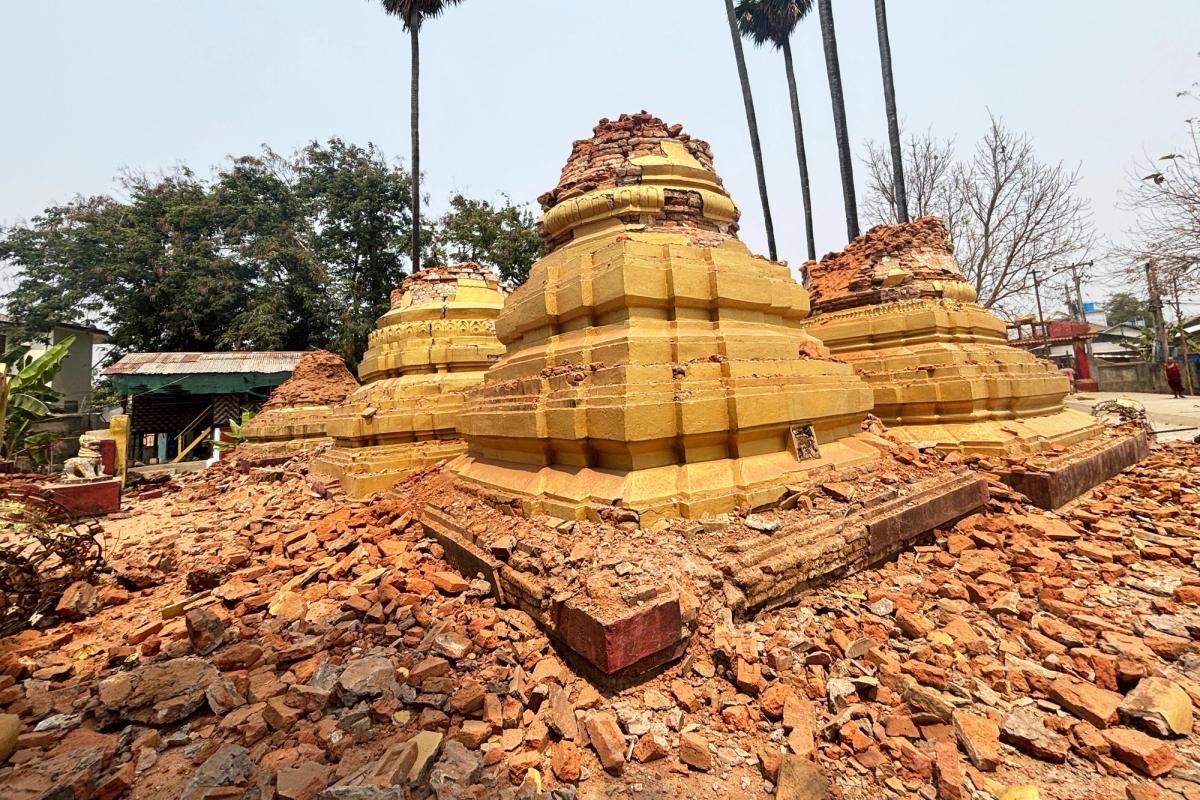The casualties continue to mount after Myanmar’s 7.7-magnitude earthquake and 6.7 aftershock on Friday afternoon, with more than 1,700 people confirmed to have died to date and more than 3,400 reported injured.
The country’s ongoing civil war makes it challenging for relief aid to get in and for reliable information to get out—though Min Aung Hlaing, the head of the military junta that seized control of the government in 2021, has made a rare appeal for international assistance. The true scale of the losses is yet to emerge, though according to the US Geological Survey’s predictive modelling, the death toll could eventually reach 10,000.
Images have also been circulating depicting significant damage to Myanmar’s heritage sites, which are already endangered by the ongoing conflict. On Friday, a video showed the tower on the Shwe Sar Yan Pagoda, an important Buddhist place of worship near the city of Mandalay, collapsing. Meanwhile, photographs captured by the Associated Press, one of the few international media organisations that still has reporters in Myanmar, show damaged pagodas in the nation’s capital of Nay Pyi Taw.
While the most significant damage to cultural heritage appears to have taken place in Mandalay, the country’s second largest city, the earthquake epicentre was close to the Unesco World Heritage Site of Bagan. This ancient temple city’s 2,200 11th- to 13th-century monuments sustained significant damage in the country’s last major earthquake in 2016 (three years before its Unesco listing).
The World Monuments Fund (WMF) issued a statement explaining that they are still gathering information from the field in both Myanmar and nearby Thailand, which also felt the impact of the earthquakes—with 19 people so far confirmed to have died. Buildings such as a partially constructed high-rise have also collapsed.
WMF said that its conservation team at Thailand’s Wat Chaiwatthanaram, a 17th-century Buddhist temple in Ayutthaya, just north of Bangkok, are safe despite some members being on scaffolding there when the quake hit. WMF also confirmed that the well-known reclining Buddha in the Bangkok temple Wat Pho has sustained some damage.
“A more detailed technical assessment is necessary in order to get a sense of the scope of the damage at this important site,” the WMF said in the statement.


